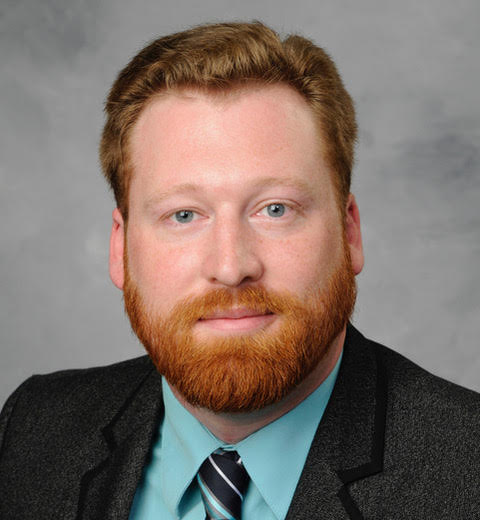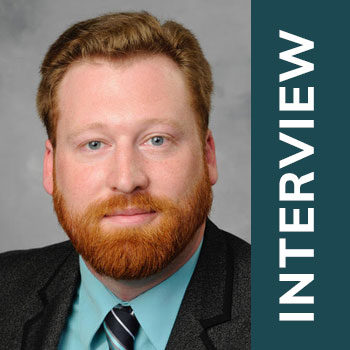Quelques semaines après l’autorisation conditionnelle de mise sur le marché octroyée par la FDA à l’aducanumab, nous avons voulu savoir quelle était l’impact de cette décision sur l’activité des centres mémoires aux Etats Unis. Vous trouverez ci-après l’interview exclusive du Dr VandenVrede, neurologue cognitiviste à l’université de Californie San Francisco, en langue originale.

For many, the Food and Drug Administration (FDA)’s conditional approval of Biogen and Eisai’s anti-amyloid antibody aducanumab on June 7 was both unexpected and groundbreaking. It has been nearly 20 years since the last drug was marketed for Alzheimer’s disease (AD) and Aducanumab is the first with putative disease-modifying properties.
Aducanumab’s conditional approval prompted a stimulating debate between those (the ‘prudents’) estimating that all conditions are not met for a proper approval of the drug, and that Aducanumab’s efficacy as a treatment for the cognitive dysfunction in AD cannot be proven by clinical trials with divergent outcomes; and those (the ‘audacious’) feeling that there is sufficient evidence from biomarker endpoints and post hoc analysis of clinical data to conditionally approve the drug, and that any more delay in the marketing would result in a loss of opportunity for patients.
It is not our intention to open the debate. However, even if premature, there is a legitimate hope that Aducanumab’s approval heralds a new era in AD treatment. The upcoming years may see the marketing of several disease-modifying drugs for AD. In this context, rather than debating aducanumab’s approval, we were eager to know how this revolutionary decision impacted the activity of memory clinics in the United States, because our own memory clinics may hopefully go through the same process someday.
We had the chance to get hold of Dr Lawren VandeVrede from the Memory & Aging Center of the UCSF Weill Institute for Neurosciences.
Dr VandeVrede, it is gratifying that you made time for the FCM. You will be addressing physicians and healthcare professionals from French memory clinics. May I start by asking you to introduce yourself?
Dr VandeVrede: I’m a cognitive and behavioral neurologist in the Memory and Aging Center at the University of California, San Francisco. I also work in the clinical trial division, led by Dr. Adam Boxer, where I was a study clinician for aducanumab’s ENGAGE clinical trial. In my research career, I’m interested in late-stage translation of plasma biomarkers into the clinic and clinical trials.
Can you tell us a little bit of the Memory and Aging Center at UCSF? (A few words on its history, organisation, your patient caseload, the typology of patients (I believe that your activity is mainly oriented toward research).
Dr VandeVrede: The MAC was started in 1998 by Dr. Bruce Miller as a clinical dementia program in the Department of Neurology, but now the division has grown to include over 250 members, including 40 faculty members from neurology, geriatrics, psychiatry, cognitive psychology, neuroscience, and nursing – the largest center of its kind in the US. The MAC offers a diverse array of clinical and research programs, including local and international outreach and teaching efforts. Clinically, as a neurologist at the MAC, I see any patient with cognitive or behavioral concerns, but I tend to see patients with neurodegenerative disease, with the most common being Alzheimer’s disease. I also spend 90% of my time in research, where I often see and evaluate patients with syndromes related to frontotemporal lobar degeneration, a focus of our center.
How did your Memory clinic receive the news of Aducanumab’s conditional approval in the MGH? Given that preliminary assessments blew hot and cold, were the news expected? Did you prepare in any way before June 7th?
Dr VandeVrede: Aducanumab’s approval generated an immediate and robust discussion within the MAC community. As a result we held open forum discussions and reviewed the data, and our senior leadership also contributed to the national conversation. Within the MAC, just as in the neurology community at large, opinions were mixed – it’s not an overstatement to say the drug is controversial. I think reasonable and intelligent people can review the data and come to differing opinions because of clear limitations in how the trials were conducted – especially the premature termination.
We had begun preparations for the possibility of a dedicated treatment clinic over a year ago, primarily because we felt the possible infrastructure changes might be substantial – as you know this is a drug that requires monthly IV infusions – and we suspected there might be a requirement for biomarker confirmation, which would require a change in our standard practice. Our trials team led this effort, but it was a challenge because of the whipsaw approval process, and the announcement of approval did come as somewhat of a surprise, even to those of us who had been preparing for it.
I believe that aducanumab’s approval does not make it readily available the next day in the memory clinics. Did you start treating patients with aducanumab in standard care? If not, what are the next steps?
Dr VandeVrede: Aducanumab is technically available to prescribe now (because it has FDA approval), but an infusion center is still needed to deliver the medicine, and there’s typically a delay in getting a medicine on formulary at institutions, which often requires many layers of review. Another concern here in the US is insurance approval, which is far from certain given the high price associated with this drug. We are awaiting Medicare review to determine coverage, as this will dictate accessibility for most of our patients. In short, a small number of patients are receiving the medicine in the US, but not yet at our center, though we are moving through the process to make it available.
You may be concise here as these aspects are very specific to the American healthcare system.
Do you feel a pression from patients and families? What is your attitude toward patients with advanced diseases, who do not fulfil the inclusion criteria of the clinical trials?
Dr VandeVrede: I did get a fair amount of communication from my patients immediately following the approval, and now I often find myself spending 5 or 10 minutes talking about aducanumab in a typical patient encounter, but I think the controversy surrounding the approval substantially dampened the appetite for this medicine. And because of the press coverage, I’ve found that patients and their families often have a fairly sophisticated understanding of the issues with this medicine.
I would be concerned about providing this medicine to patients who are outside the population studied in the trial, particularly because even that evidence is limited and incomplete. I absolutely understand the desire to find a treatment – it’s what motivates me every day – and I do think we will have treatments for neurodegenerative disease soon, but to get there, we have to be careful at this stage to get it right.
Aducanumab treatment requires a monthly injection and clinical and MRI monitoring of amyloid-related imaging abnormalities (ARIAs). How did your memory clinic prepare or how is it preparing to welcome patients for treatments? Do you plan to adapt your infrastructures and staff? Will you size up your day hospital? Or will you lean on the private sector to perform the perfusions?
Dr VandeVrede: We’re lucky at the MAC to have the faculty and infrastructure to adapt to this challenge, and we’re working closely with our department’s infusion center to provide this service internally. We also have dedicated MRI scanners available, and we’ve worked with neuroradiology to create a standard protocol to monitor for ARIA and expeditiously report the results. We’re also discussing how to streamline biomarker confirmation, which means expanding access to PET and CSF testing through our LP clinic, but I believe the need is great for plasma biomarkers in this space, and I’m hopeful that reliable biomarkers will become clinically available soon. We hope to create a model that can be expanded as more disease modifying therapies come online, and hopefully our approach can be adapted elsewhere if we demonstrate it can be done efficiently.
Did aducanumab’s approval prompt campaigns or initiatives to promote early diagnosis in the US?
Dr VandeVrede: I’m not aware of any at present, but a disease modifying drug might remove the twin barriers of futility and fatality that prevent many patients from seeking diagnosis and care. Of course, we will have to grow as a field to meet that demand.
Have some patients with prodromal AD declined participating to a clinical trial to get Aducanumab in standard care?
Dr VandeVrede: As I’m sure you see in your practice, patient interest in experimental treatments is high in this disease, and at our center we continue to have more patients interested in trials than trials available for them. Since we don’t offer aducanumab clinically as of yet, we haven’t had this specific issue arise, but how aducanumab should be incorporated into clinical trials is an area of active discussion, and I suspect it will have to be an active consideration going forward in both recruitment and trial design.
Last but not least, as a neurologist in one of the most prestigious Memory clinics, How do you envision Alzheimer’s diagnosis and care in, let’s say, 2030?
Dr VandeVrede: In the future, I envision early diagnosis, possibly even presymptomatic screening, and tiered interventions depending on the stage of the disease. I suspect multi-drug regimens are likely, as we’ve seen in all other successfully managed chronic medical conditions, but just like in the oncological world, I wonder if a consolidation/maintenance approach might work.
I’ll admit I’m an optimist – I’ve been told it’s a requirement to be a good trialist – but I honestly believe we’re in those moments just before the dawn of a new era of effective treatments for Alzheimer’s and other neurodegenerative disease. We’re standing on the shoulders of giants, and the field is finally reaping the benefits of decades of clinical and basic research, with a plethora of biomarkers and treatment options on offer. It’s a very exciting time to be a cognitive and behavioral neurologist.

